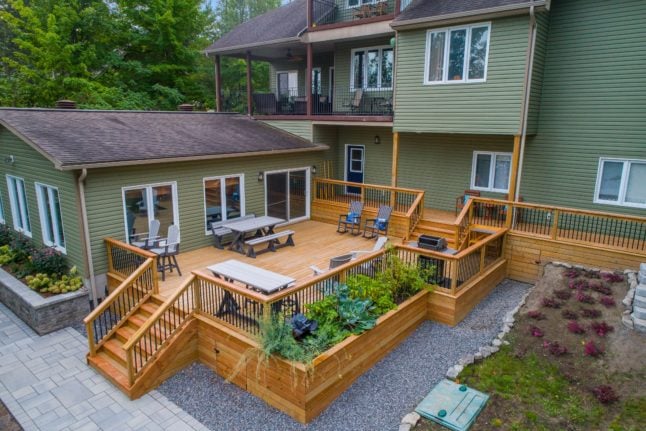The French tax service has fixed its eyes on verandas and home extensions, with the hopes of locating those who failed to declare any new, permanent changes to their property to the tax authorities.
The DGFiP – the Public Finances Directorate General in France – recently announced its intention to extend the use its artificial intelligence tool, originally intended to locate undeclared swimming pools, for seeking out undeclared home extensions as well.
In France, the property owners’ tax taxe foncière is linked to home value, so any “permanent” changes that increase property value must be declared. For pools, property owners must declare the installation of a permanent in-ground swimming pool within 90 days of construction.
Officially, tax authorities refer to something as being permanent if it is fixed to the ground with “large screws or cement.” This basically means that if you cannot pack up the deck or pool at the end of the season, then it could be considered as part of your property taxes for increasing the value of your home.
READ MORE: Everything you need know about installing a swimming pool at your French property
The software, which was created by Google and the French IT company, Capgemini, was developed at the behest of French tax authorities.
Essentially, the tool uses “aerial photographs taken by the National Institute of Geographic and Forestry Information (IGN)” to increase the accuracy of “direct local taxation,” explained a spokesperson from the DGFip to French daily Le Parisien at the start of the project.
Originally, it was tested out in nine départements across France in 2021: Alpes-Maritimes, Var, Bouches-du-Rhône, Ardèche, Rhône, Haute-Savoie, Vendée, Maine-et-Loire and Morbihan. The experiment helped locate hundreds of undeclared swimming pools and allowed tax authorities to levy over €10 million in increased tax revenue, as shown in the graphic below.
Nos confrères du Parisien expliquent que les agents ont utilisé un logiciel d’intelligence artificielle. Bilan 553 piscines frauduleuses détectées en Anjou pour un préjudice fiscal d’un peu plus de 206 milles euros. Le dispositif va être étendu à l’ensemble du territoire 2/2 pic.twitter.com/7ZVfSfNB88
— Jean-Sébastien HUARD🐾❄️ (@jeansebh) August 29, 2022
At the start of the project, a spokesperson for the DGFiP told Le Parisien that they hope to extend the software to “the entire metropolitan territory in 2022.”
Now, they are hoping to further widen the scope of the technology so that it can also locate verandas and home extensions.
However, the project has received some backlash for having a high rate of errors. Philippe Laget, a worker a the Public Finances office in Bouches-du-Rhône noted to Le Parisien that his département had error rates of about 30 percent, “which will lead to the taxation of certain pools that should not have been taxed, or even to tax adjustments.”
This was often due to the software mistaking non-permanent installations or above-ground pools for permanent ones.
The experimental round of the software simply informed property-owners that an undeclared swimming pool had been located on their property, and asked them to respond by providing details such as the time of construction and size of the pool.
READ MORE: Reader question: How can I challenge my French tax bill?
The director of the DGFiP assured Le Parisien that before the technology is extended, they will “need to be sure” that the software will be able to decipher between home extensions and other outdoor structures such as dog houses or kids’ backyard forts. Tax agents are also hopeful that the software will allow them to locate abandoned buildings so that taxpayers are not unnecessarily taxed for vacant, derelict structures on their properties.
A report at the end of the 2021 project found that 94 percent of those who received this letter did indeed “confirm the taxable character of their swimming pool,” though local tax agents also noted an increase in complaints after tax notices were sent in August. Property-owners can contest the results of the software by sending photographs or requesting that an agent visit their home.



 Please whitelist us to continue reading.
Please whitelist us to continue reading.
Member comments